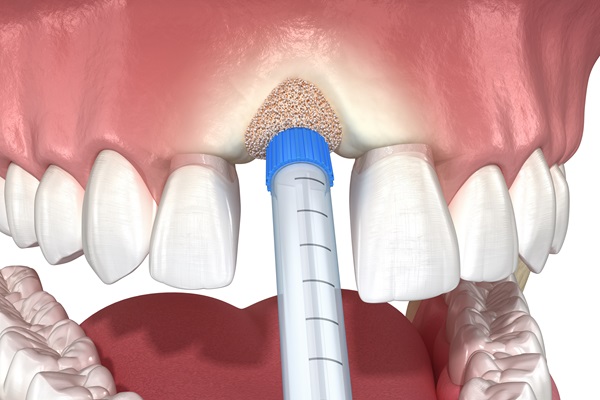When Is a Bone Graft Necessary?

A dental bone graft is a procedure used to replace bone loss in the jaw. If an individual loses teeth or a portion of the jaw bone, a graft stimulates bone growth to reshape the jaw and prepare for dental implants. Dental surgeries, such as sinus augmentation and ridge augmentation, may require bone grafting as well.
How is a bone graft performed?
During a bone graft, the technician cleans the area before the dentist makes an incision to separate the gum from the bone. The dentist isolates the sections of bone that require growth and places bone material between them. Bone grafts may be harvested from the patient, a donor, or the dentist may use an artificial bone graft.
The grafts are secured with dissolvable adhesive, screws, or membranes. After the procedure, it may take a few months for grafts to fuse with the existing bone.
When are these procedures recommended?
There are several situations when a patient may need a graft procedure.
The patient has missing teeth
Many patients choose dental implants to replace missing teeth. However, after a severe infection or trauma, the patient may have suffered some bone loss in the jaw, so there is not a strong enough base to support implants. Dental implant surgery requires dentists to place screws into the jawbone before installing a crown atop the screw. Bone grafting can create a strong base for the implant.
The patient has bone loss
Bone loss occurs when an individual loses teeth because of the alveolar bone. The only job the alveolar bone has is to support the teeth. Without teeth, the bone begins to atrophy. The jawbone increases in strength whenever a person chews, so if a patient cannot chew, the jawbone can also atrophy.
To lose bone mass in the jaw can cause a patient's face to look shorter. It may protrude forward and winkle the skin around the area of the jaw. The lips and surrounding muscles may also change in appearance. Older adults who have osteoporosis may have an increased risk of bone loss. However, any person who suffers injuries to the jaw, significant infections, or practices poor dental hygiene may require a bone graft.
The patient has gum disease
Gum disease can cause the gums to pull away from an individual's teeth and the teeth to eventually loosen and fall out. Some patients with gum disease do not need or do not choose to have implants. Regardless, if a person loses teeth, bone loss can occur and begin to affect the gum tissue and nearby teeth. A bone graft can stabilize the jaw to prevent future complications and bone loss.
The patient has a fracture
In an accident, the jaw bone may be broken. If a patient has a fractured jaw, the bone has to be rejoined. Without mending the fracture, it can be difficult to chew, speak, or function. Sometimes, bone grafting can be used to fix a fractured jaw bone.
Conclusion
Bone grafting preserves the bone structure and may be recommended to increase the chance of a successful dental implant, as well as for other oral health issues. Discuss with a dentist the need for a bone graft.
Request an appointment here: https://dentalimplantsoakland.com or call Oakland Dental Implant Center at (510) 257-2284 for an appointment in our Oakland office.
Check out what others are saying about our dental services on Yelp: Will I Need a Bone Graft for Dental Implants in Oakland, CA.
Recent Posts
Even if you don't know much about implants, chances are you've heard the term "dental implants" thrown about a few times. Bone grafting, on the other hand, is a term that is less well-known. It is a little ironic because bone grafting and implants are frequently used together in the dental profession. When bone loss…
A bone graft is a surgical procedure for correcting issues with bones or joints. It involves transplanting bone tissue to a deficient area and is beneficial for bones that are damaged or lost due to trauma or tooth loss. Advances in dental technique and technology have made the procedure easier and effective for stimulating jawbone…
Many who need dental implant and crown procedures put off the treatment of out fear that the procedure will be painful.Understanding what pain comes with the procedure can calm anxiety and allow those who are afraid to follow through with the treatment.Dental implant and crown placement involves some pain and soreness. That said, it may…
Finding out you need cold sore treatment may elicit a mixture of emotions. While this is understandable, working with a general dentist can help you manage symptoms and outbreaks. In an effort to ease some of the negative feelings that result from uncertainty regarding cold sore treatment, we will answer five of the most commonly…


